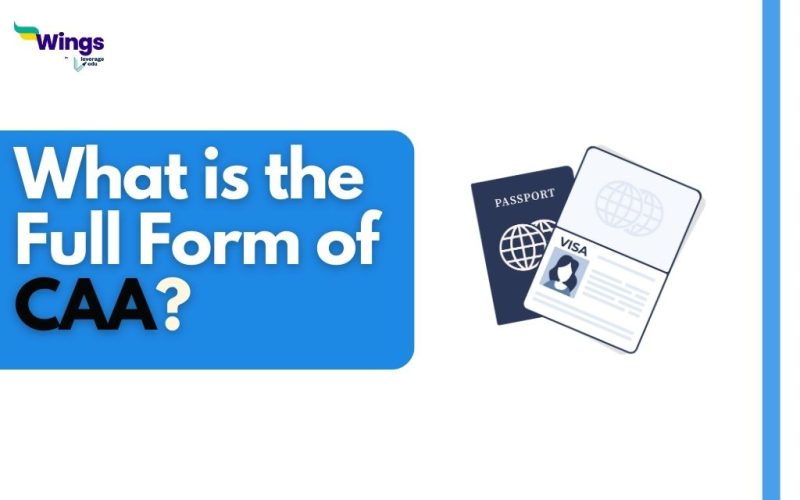The full form of CAA is Citizenship Amendment Act. The BJP-led Indian government passed this act on 11th December 2019. This act amended the Citizenship Act of 1945. With the new legislation, the government plans to grant citizenship to only Hindu, Jain, Christian, Sikh, and Parsi people who fled from Afghanistan, Bangladesh, and Pakistan before December 2014. Read this blog to know about CAA.
Table of Contents [show]
What is CAA?
CAA amends the Citizenship Act of 1955 to provide a pathway for people of selected communities to obtain citizenship or you can say a prohibition from acquiring Indian citizenship for illegal migrants. If a person wants to leave his country and come to India from three neighbouring countries of India (Pakistan, Bangladesh and Afghanistan) due to persecution or any other reason, then through this Citizenship Amendment Act, those refugees get Indian citizenship. In such a situation, those refugees will have to prove that they have lived in India for five years.
The government will only consider people who are victims of religious prosecution. According to this act, communities of Jain, Hindu, Christian, Parsi, and Sikh migrants who entered the Indian territory before 31 December 2014 will receive citizenship in only 6 years. Furthermore, CAA also reduced the residence requirement for naturalisation from 11 years to 5 years.
However, Muslim migrants will not be eligible for Indian citizenship after being religiously prosecuted in their country of origin. Owing to this reason, the government violates the Right to Equality guaranteed by Article 14 of the Constitution of India. Furthermore, the act also defies the secular nature of the Constitution by singling out “Islamic Countries”- Afghanistan, Pakistan, and Bangladesh.
Also Read: What are the Fundamental Rights and Duties?
2019 Key Provisions of The Citizenship ( Amendment) Bill
The Citizenship Amendment Act (CAA) provides citizenship to non-Muslim migrants from Afghanistan, Bangladesh, and Pakistan who entered India before December 31, 2014. These migrants must have been excluded from the Foreigners Act of 1946 and the Passport Act of 1920.
The Act allows these migrants to obtain citizenship through registration or naturalization. The usual 11-year residency requirement for naturalization is reduced to five years for these migrants. Once citizenship is granted, any legal records related to their unlawful migration or nationality are terminated.
The CAA does not apply to the tribal territories of Assam, Meghalaya, Mizoram, and Tripura, which are listed in the Sixth Schedule of the Constitution. It also does not extend to the “Inner Line” territories regulated by the Bengal Eastern Frontier Regulation of 1873.
The central government can cancel the registration of Overseas Citizen of India Cardholders (OCI) in certain circumstances, such as if they obtained the OCI through deception or were sentenced to two years or more in jail.
What is NRC or National Register of Citizen?
The National Register of Citizens (NRC) is a government initiative in India. It aims at creating a comprehensive and updated list of genuine Indian citizens residing in a particular state or territory. The primary objective of the NRC is to identify and distinguish Indian citizens from those who may have entered the country illegally.
The process involves a massive exercise of scrutinising official documents and records to establish a person’s citizenship. Individuals are required to provide documentary evidence to prove their lineage and residency in India. The documents typically include birth certificates, land records, electoral rolls, and other supporting papers.
History of CAA and NRC
The NRC process was first conducted in the state of Assam in 2019. It aimed to identify illegal immigrants, particularly those who had entered the state after March 24, 1971. This date is the cut-off date stipulated in the Assam Accord. However, the final NRC list in Assam led to the exclusion of a significant number of people, mostly Muslims and poor. Owing to its discriminatory intent, the NRC continues to be a topic of controversy and public debate. Moreover, its implications on citizenship and concerns about its potential impact on vulnerable communities make it a draconian practice.
Which religions are included in CAA?
CAA includes people from six communities – Hindu, Sikh, Christian, Jain, Buddhist and Parsi. Through this law, these people will get Indian citizenship if they have come to India on or before December 31, 2014.
Also Read: What are Human Rights?
CAA-NRC
CAA when combined with NRC violates fundamental rights granted under the Indian Constitution. CAA-NRC could be used to target and discriminate against Muslims by providing a pathway to citizenship for non-Muslim immigrants. On the other hand, it will leave Muslims vulnerable to being excluded from the citizenship register. Additionally, those without documents will also suffer on account of NRC. Even though the government states there is no direct link between the CAA and NRC, the process is unreliable. Therefore, the debate surrounding the relationship between CAA and NRC continues to be a contentious issue in India.
Related Blogs
We hope this blog has helped you understand the full form of CAA and everything related to it. If you want to know more, find the 300+ full forms list on our blog. In the world of short forms, you can rely on the Leverage edu page to know about more full forms like this! Connect with us, study abroad experts, to achieve your international dream today!
 One app for all your study abroad needs
One app for all your study abroad needs















 45,000+ students trusted us with their dreams. Take the first step today!
45,000+ students trusted us with their dreams. Take the first step today!
